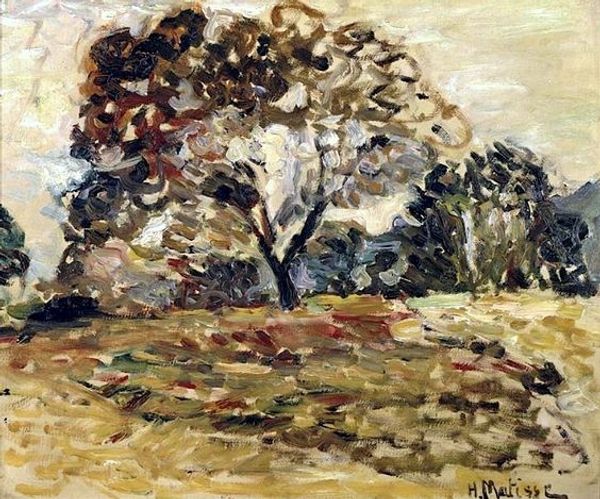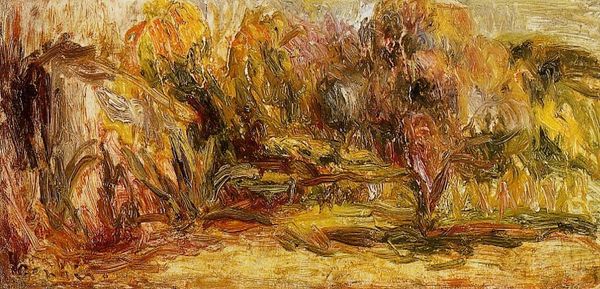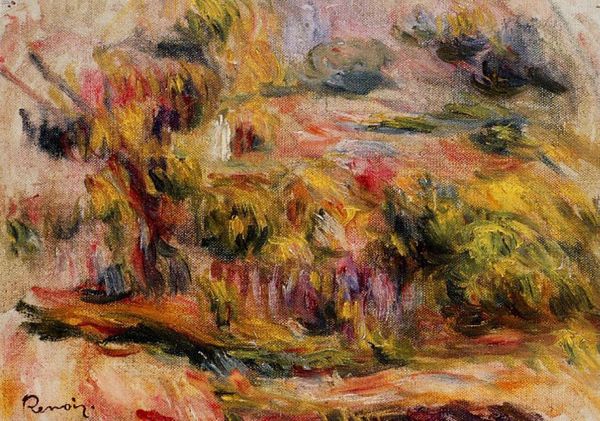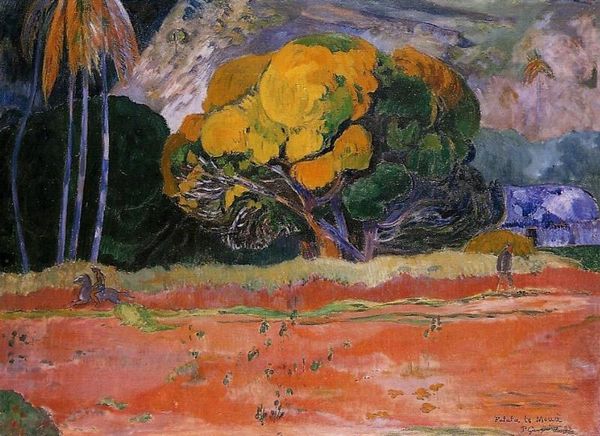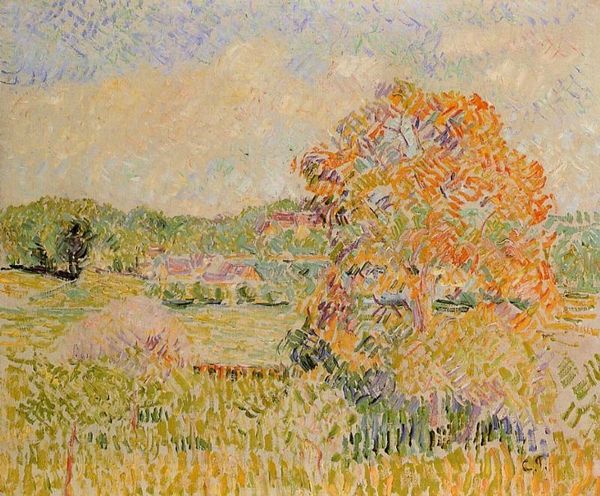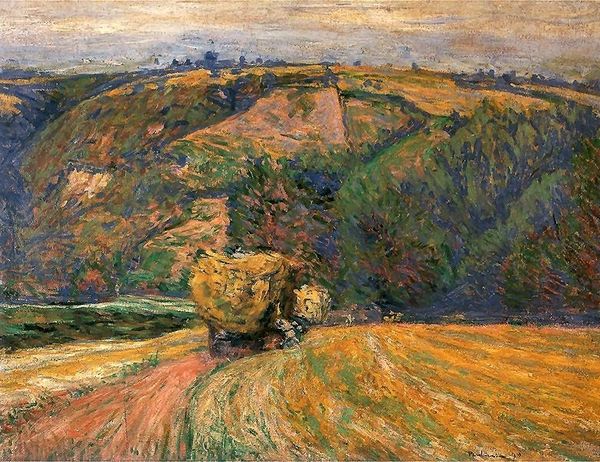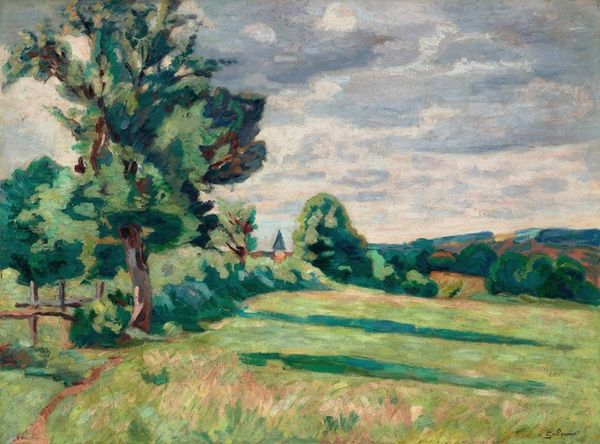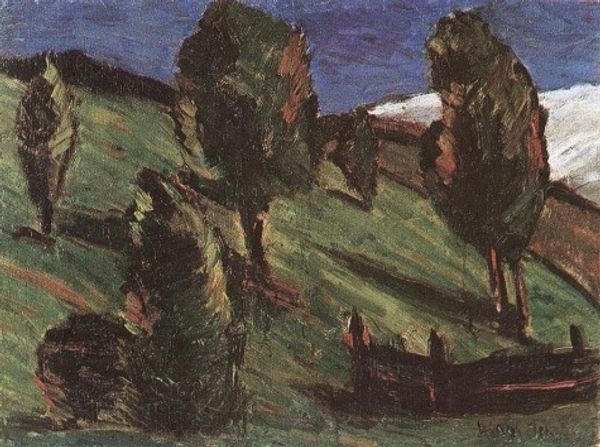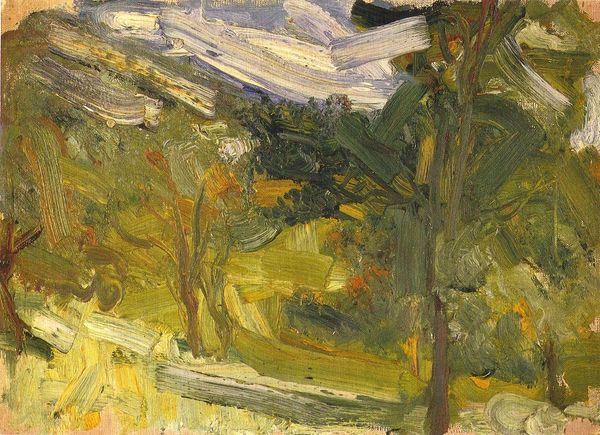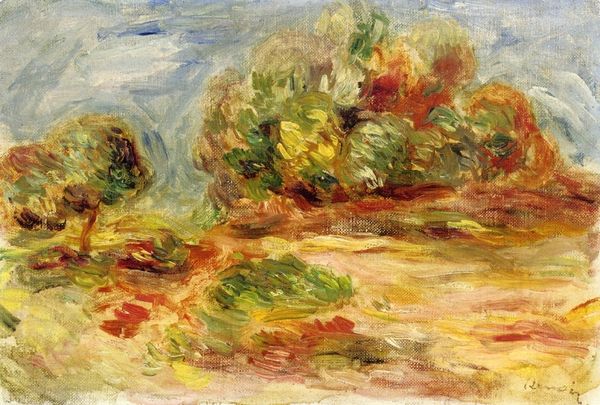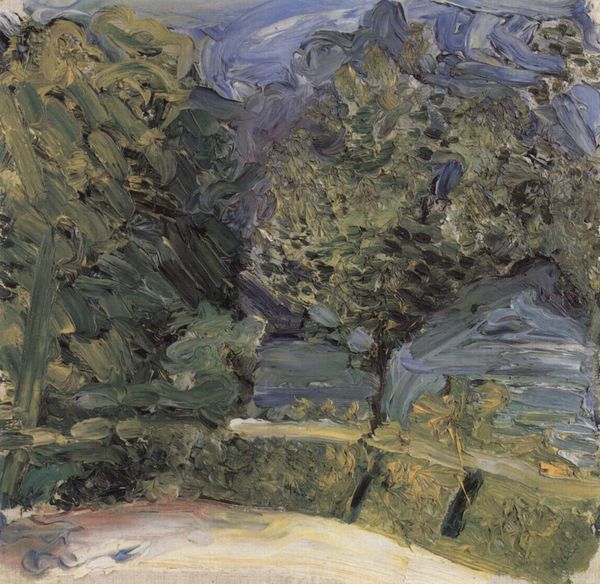
Dimensions: 16.5 x 22.5 cm
Copyright: Public domain US
Henri Matisse made this small oil on cardboard painting, Landscape of Corsica, at an unknown date. It depicts the island’s topography in loose brushstrokes and vibrant colors. Painted sometime after 1898, we can interpret this landscape as Matisse’s response to the social and artistic milieu of France at the turn of the 20th century. Corsica, as an island, stood apart from the rapid industrialization and urbanization transforming mainland France. By painting there, Matisse may be engaging with contemporary debates around the value of rural life. The free application of paint and bold colors also mark this work as progressive and self-consciously modern. Unlike the academic painting of the time, there’s no attempt to hide the brushstrokes or create a realistic illusion. To better understand the significance of this landscape, we might consult period travel guides and accounts of Corsica or the writings of contemporary French intellectuals. Only by situating this painting within its historical context can we fully appreciate its meanings.
Comments
No comments
Be the first to comment and join the conversation on the ultimate creative platform.
